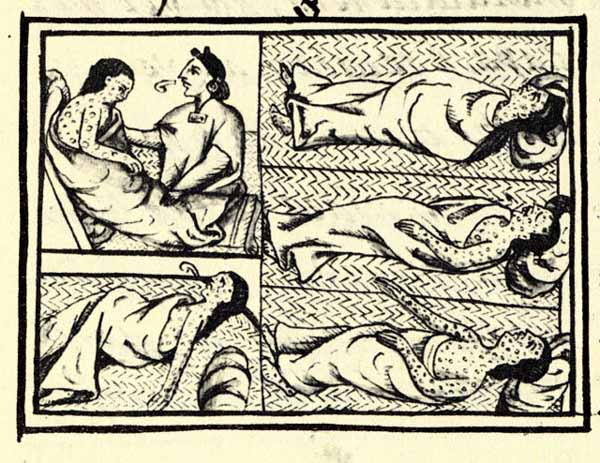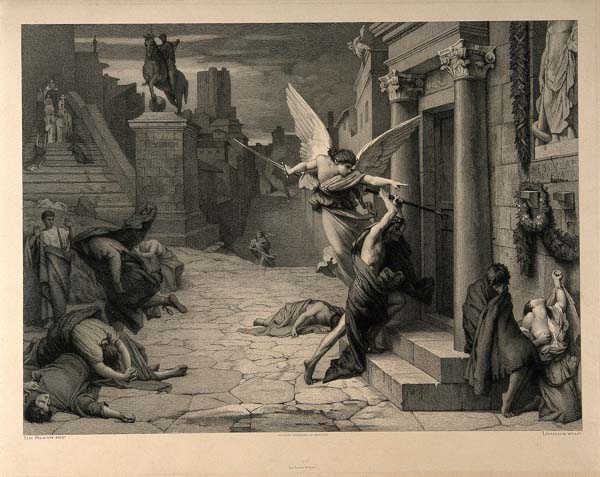
10. Cocoliztli Epidemic (1545/1546) Mexico – 800,000 deaths
Between 1545–1548 AD, a mysterious illness, which was characterized by high fevers and bleeding, ravaged the Mexican highlands in epidemic proportions. The disease became known as Cocoliztli by the native Aztecs, and had devastating effects on the area’s demography, particularly for the indigenous people.

9. Hong Kong flu (1968-1970) worldwide – 1 million deaths
The Hong Kong flu was caused by an H3N2 strain of the influenza A virus, descended from H2N2 through antigenic shift, a genetic process in which genes from multiple subtypes reassorted to form a new virus. Because it originated in Hong Kong, the epidemic is also referred to as Hong Kong flu.

8. Cholera (since 1961) worldwide – 1.5 million deaths
This cholera Pandemic, based on the strain called El Tor, started in Indonesia in 1961 and spread to Bangladesh by 1963. Then it went to India in 1964, followed by the Soviet Union by 1966. In July 1970 there was an outbreak in Odessa and in 1972 there were reports of outbreaks in Baku, but the Soviet Union kept this information quiet. It reached Italy in 1973 from North Africa. Japan and the South Pacific saw a few outbreaks by the late 1970s.

7. Asian flu (1957/1958) worldwide – 1-2 million deaths
The category 2 Asian flu Pandemic outbreak of influenza A virus originated in China in early 1956, and lasted until 1958. Some authors believe it originated from a mutation in wild ducks combining with a pre-existing human strain. Other authors are less certain. The virus was first identified in Guizhou. It spread to Singapore in February 1957, reached Hong Kong by April, and the US by June.

6. Covid-19 Pandemic (2020/2021) worldwide – 4 million deaths
The COVID-19 Pandemic, also known as the Coronavirus Pandemic, is an ongoing global epidemic of Coronavirus Disease 2019 (COVID-19), caused by the severe acute respiratory syndrome coronavirus 2 (SARS-CoV-2). The virus was first identified in Wuhan, China, in December 2019. The World Health Organization declared a public health emergency of international concern regarding COVID-19 on January 30, 2020 and later declared a epidemic on March 11, 2020. As of June 15, 2021, more than 176 million cases have been confirmed, with nearly 4 million confirmed deaths attributed to COVID-19, making it one of the deadliest epidemics in history.

5. Smallpox (1519/1520) Mexico – 5-8 million deaths
The initial symptoms of the smallpox disease included fever and vomiting. This was followed by formation of sores in the mouth and a skin rash. Over a number of days the skin rash turned into characteristic fluid filled bumps with a dent in the center. The bumps then scabbed over and fell off leaving scars. The disease used to spread between people or via contaminated objects.

4. Antonine Plague (165-180) Roman Empire – 7-10 million deaths
The Antonine Plague of 165 to 180 AD, also known as the Plague of Galen (from the name of the Greek physician living in the Roman Empire who described it), was an ancient Pandemic brought back to the Roman Empire by troops returning from campaigns in the Near East. Scholars have suspected it to have been either smallpox or measles, but the true cause remains undetermined. The epidemic may have claimed the life of a Roman emperor, Lucius Verus, who died in 169 and was the co-regent of Marcus Aurelius Antoninus, whose family name, Antoninus, has become associated with the epidemic.











